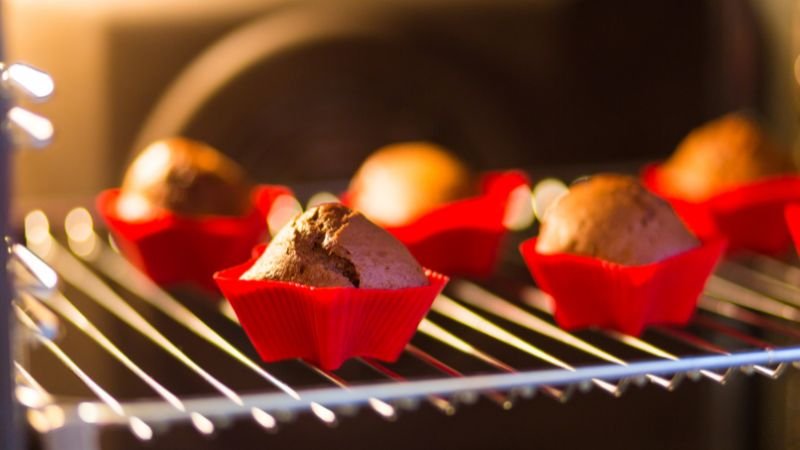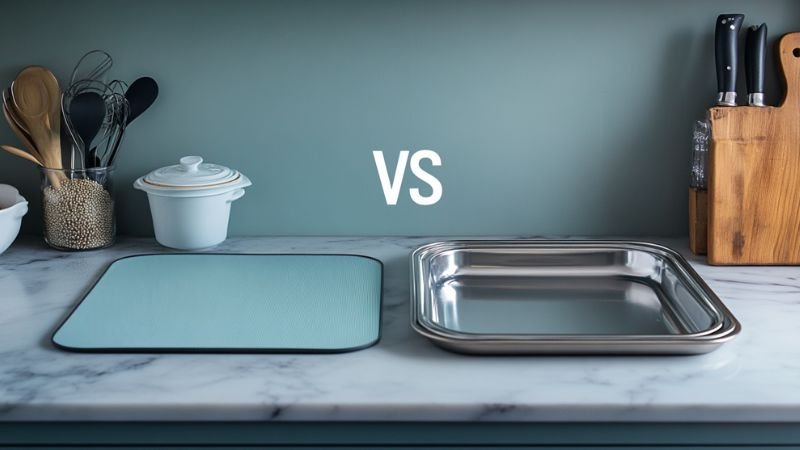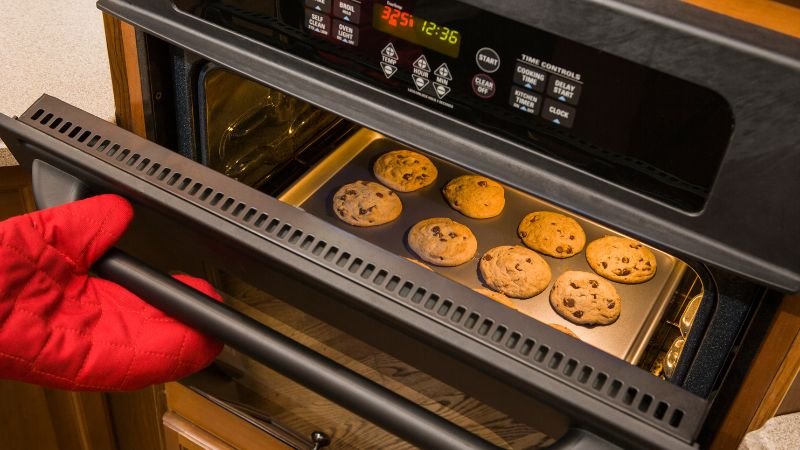When it comes to baking gear, we all want something that’s safe, durable, and easy to use. That’s where silicone comes in—a flexible, non-stick material that’s become a favorite in kitchens everywhere. But can you really put silicone in the oven without worry? Is it safe for baking at high temperatures? Let’s find out why silicone bakeware is so popular, and what you need to know before using it.
Yes, silicone is oven-safe. It’s built to handle temperatures up to 428°F (220°C), making it great for most baking needs. But not all silicone is the same—cheaper options might have fillers that reduce heat resistance. When used correctly, silicone molds and mats can handle high heat without melting or releasing harmful chemicals. Just be sure to stick with high-quality, food-grade silicone for peace of mind.
Now, let’s dig into what makes silicone bakeware a go-to choice and some tips for using it safely.
What Makes Silicone Safe for Oven Use?
The widespread use of silicone bakeware is based on its unique properties. But what exactly makes it suitable for the oven? Here’s what you need to know:
- Heat Resistance: Quality silicone is specifically designed to withstand temperatures ranging from -40°F to 428°F (-40°C to 220°C). This range covers most household and professional baking needs. Food-grade silicone does not degrade or emit harmful substances at these temperatures, ensuring a safe baking environment.
- Non-Toxic Nature: Unlike some plastics, food-grade silicone does not contain BPA, phthalates, or other harmful chemicals. This makes it safer to use in direct contact with food, even at high temperatures. Plus, it doesn’t react with food or produce odors and flavors.
- Flexibility and Non-Stick Properties: The flexible nature of silicone makes it easy to remove baked goods from molds. Its non-stick surface reduces the need for greasing, which can help you prepare healthier meals.
- Durability and Reusability: Silicone bakeware is not only safe but also highly durable. It does not crack, rust, or become brittle over time. As a result, it’s more eco-friendly than disposable parchment paper or aluminum foil.
What Should You Look Out for When Using Silicone Bakeware?
While silicone bakeware offers many advantages, there are still some things you need to be aware of. Here are a few tips to ensure you’re using it safely and effectively.
Check the Temperature Limit
Always confirm the maximum temperature your silicone bakeware can handle. While most food-grade silicone is rated up to 428°F (220°C), some specialty items can tolerate temperatures up to 500°F (260°C). Avoid exceeding the recommended temperature to prevent damage or safety issues.
Look for FDA or LFGB Certification
To ensure the silicone is genuinely food-safe, look for products with FDA (Food and Drug Administration) or LFGB (German standard for food safety) certification. These certifications indicate that the material has passed strict testing for non-toxicity and temperature resistance.
Avoid Direct Contact with Flames or Heating Elements
While silicone can withstand high oven temperatures, it should not be placed directly on heating elements or open flames. Doing so can damage the material and pose a fire hazard.
Beware of Low-Quality Silicone
Not all silicone bakeware is created equal. Lower-quality products may contain fillers that can emit unpleasant odors, discolor, or even melt at high temperatures. To check if your silicone bakeware is of high quality, perform a simple pinch test: pinch and twist the silicone material. If the color changes to white, it likely contains fillers.

Should You Grease Silicone Bakeware?
Silicone is naturally non-stick, so in most cases, you won’t need to grease it. However, lightly greasing or spraying with oil can still be helpful, especially for items with intricate designs, like silicone molds or detailed baking shapes. This makes it easier to remove baked goods and provides extra assurance against sticking.
Some chefs prefer greasing out of habit or when using their silicone bakeware for the first time. There’s no harm in adding a little bit of oil if you want a smoother release.
For details please check Does Silicone Bake Molds need to be Greased?

Is Silicone Better Than Metal for Baking?
Here’s a comparison table that highlights the key differences between silicone and metal bakeware for baking:
| Feature | Silicone Bakeware | Metal Bakeware |
|---|---|---|
| Heat Resistance | Withstands temperatures up to 428°F (220°C) or higher | Can handle much higher temperatures (up to 500°F/260°C or more) |
| Heat Conductivity | Poor conductor, leading to even but slower baking | Excellent conductor, providing better browning and crisping |
| Non-Stick Properties | Naturally non-stick, requires little to no greasing | May require greasing or lining to prevent sticking |
| Flexibility | Highly flexible, easy to bend and remove baked goods | Rigid, provides stability, but may require extra effort to remove goods |
| Durability | Durable but can stain or discolor over time | Extremely durable and resistant to scratches or dents |
| Weight | Lightweight, easy to store | Heavier, may take up more space |
| Ease of Cleaning | Easy to clean, often dishwasher-safe | Can be easy to clean, but may develop rust spots if not dried properly |
| Suitability for Browning | Does not brown baked goods well | Great for achieving a crisp crust or golden-brown finish |
| Cooling Time | Cools down quickly after baking | Retains heat longer, which can continue cooking the food |
| Price | Generally more affordable | Can be more expensive, especially for higher-quality brands |
When choosing between silicone and metal, consider your baking needs. Silicone is great for delicate items like muffins and cakes, while metal is better for items that require a crispy crust, like cookies or bread.
Can Silicone Go from Freezer to Oven?
Another advantage of silicone bakeware is its ability to transition seamlessly from the freezer to the oven. Due to its wide temperature tolerance, silicone can go from -40°F to 428°F without cracking or degrading. This makes it perfect for freezing desserts, baking directly afterward, or preparing meals that need to be stored in the freezer before being reheated.
However, to avoid thermal shock, it’s best to let frozen silicone bakeware rest at room temperature for a few minutes before placing it in a preheated oven. This will help prevent any potential warping or stress on the material.
Does Silicone Affect the Taste or Smell of Food?
High-quality, food-grade silicone is odorless and does not alter the flavor of foods. However, if your bakeware has been exposed to strong-smelling substances (like garlic or fish), it may absorb some of those odors over time. To keep your silicone bakeware fresh and free from lingering scents, follow these tips:
Wash Thoroughly
After each use, wash silicone items thoroughly with warm, soapy water. A thorough cleaning will help remove any food residues and odors.
Use a Baking Soda Soak
For stubborn smells, try soaking the silicone in a solution of water and baking soda for a few hours. This can help neutralize any lingering odors.
Avoid Strong Chemicals
Do not use harsh chemicals or abrasive scrubbing tools on silicone bakeware, as these can damage the surface and affect its performance.

Why Does Some Silicone Discolor in the Oven?
While food-grade silicone is generally heat-resistant and durable, it can still become discolored over time. This discoloration is usually due to the absorption of oils or dyes from the foods being baked. The good news is that discoloration doesn’t affect the performance or safety of the silicone.
To minimize discoloration, try the following:
- Line your silicone bakeware with parchment paper if you’re baking with highly pigmented foods, such as berries or turmeric.
- Avoid using oils with strong colors (like dark sesame oil), which can stain the silicone.
- Regularly clean your silicone items to remove residues that may lead to staining.
Are There Any Downsides to Using Silicone in the Oven?
While silicone has many benefits, it’s important to note some potential downsides:
- Flexibility Can Be a Drawback: The flexibility that makes silicone great for removing baked goods can also make it difficult to handle when full of batter. Placing the silicone bakeware on a baking sheet can provide extra stability.
- Not Suitable for Browning: Silicone bakeware does not conduct heat as well as metal, so it may not achieve the same level of browning on baked goods. If you’re looking for a crisp crust, metal pans might be a better choice.
- Lower Quality Products May Contain Fillers: As mentioned earlier, not all silicone bakeware is created equal. Lower-quality silicone products may include fillers that reduce heat resistance, cause unpleasant odors, and even leach chemicals.
What Can You Bake in Silicone?
Silicone bakeware is versatile and can be used for a variety of items, including:
- Cakes, muffins, and cupcakes
- Cookies and brownies
- Quiches and pies
- Roasted vegetables
- Chocolates and candies
Just remember to stay within the recommended temperature range and follow usage tips for the best outcomes.
Conclusion
Silicone can indeed go in the oven, as long as you use high-quality, food-grade products that are rated for the appropriate temperatures. Its heat resistance, non-toxic nature, and convenience make it a popular choice in kitchens around the world. By following some basic safety tips and maintenance practices, you can enjoy the benefits of silicone bakeware for many years.
Related post:
Can Silicone Go in the Microwave